'This is war': The new epicentre of the coronavirus revealed
The World Health Organisation has declared South America the new epicentre for the coronavirus, with Brazil now having the second highest number of confirmed cases in the world.
Speaking during a press conference from Geneva on Friday, local time, Dr Michael Ryan, director of WHO’s Health Emergencies Program spoke of a number of countries in South America seeing increasing case numbers.
“We’ve seen many South American countries with increasing numbers of cases and clearly there’s a concern across many of those countries but certainly the most affected is Brazil at this point,” he said.

Experts have said the surging deaths all across Latin America showed the limits of government action in a region where millions have informal jobs and many police forces are weak or corrupt and unable to enforce restrictions.
However, some experts have theories the number of confirmed cases and deaths in places across Latin America are actually much higher than what is being recorded.
Brazil ravaged by “little flu”
Brazil has 330,890 confirmed cases and 21,048 deaths according to Johns Hopkins data, suggesting COVID-19 is more than just a “little flu” and a “fantasy”, as President Jair Bolsonaro once described it.
Amid the coronavirus pandemic, Brazil’s president fired Health Minister Luiz Henrique Mandetta for supporting state governors who shut down non-essential businesses and adopted other measures against the virus.
President Bolsonaro unveiled rules Wednesday expanding the prescription of chloroquine, the predecessor of an anti-malaria drug promoted by US President Donald Trump, for coronavirus patients despite a lack of clinical proof that it is effective.
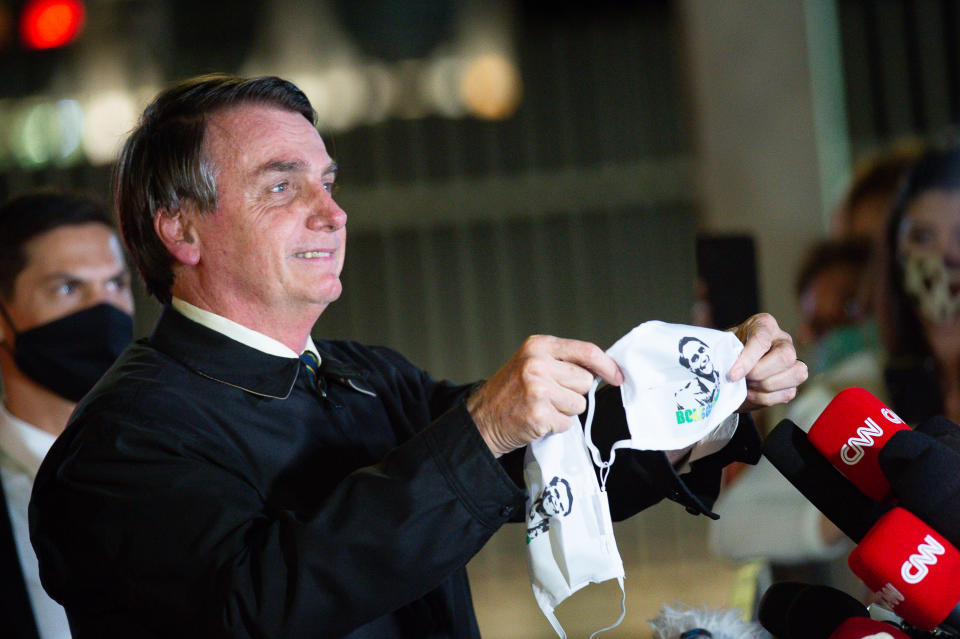
While chloroquine was being used to treat COVID-19 patients in hospitals, the new rules mean people with mild symptoms can given the drug.
“There is still no scientific evidence, but it is being monitored and used in Brazil and worldwide,” President Bolsonaro said on his Facebook page.
After firing the health minister, Nelson Teich got the job, which he resigned from last week.
Teich did not explain why he left, but he had publicly disagreed with Bolsonaro over chloroquine and his replacement, Gen. Eduardo Pazuello, has no prior health experience.
During Friday’s press conference, Dr Ryan pointed out the evidence does not support the “widespread” use of the drug for COVID-19 treatment.
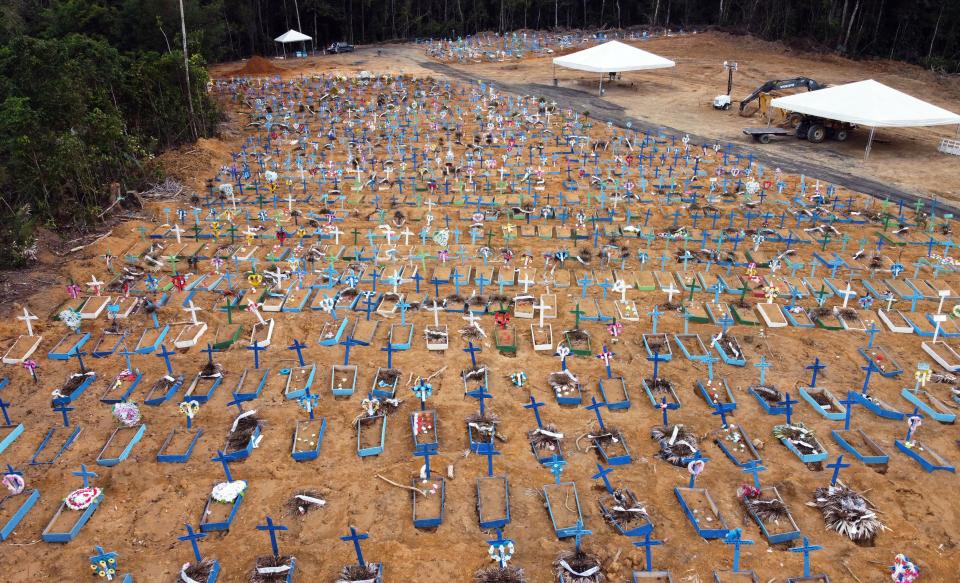
It has been long predicted Brazil, the most populous country in South America, would become an epicentre for the coronavirus.
Experts have warned the actual number of confirmed cases could actually be much higher, due to the low testing rates.
Dr Ryan pointed out most of the cases in Brazil are in São Paulo region, however Rio de Janeiro and the Amazon have also been hit hard.
Cardboard coffins and missing people: Chilling details on country's REAL death toll emerge
The outbreaks which have seen Australia reach 100 coronavirus deaths
Health systems have pushed capacity across the country and intensive care units are overwhelmed and unable to admit new COVID-19 patients, many people are now dying at home, experts warn.
Cemeteries are using backhoes to dig hundreds of graves at a time, and Manaus in the heart of the Amazon rainforest is burying the dead in mass graves.
President Bolsonaro is arguing to reopen the economy, despite admitting Brazil is yet to experience its peak and continues to oppose governors and mayors who are renewing stay-at-home recommendations or introducing stricter measures.
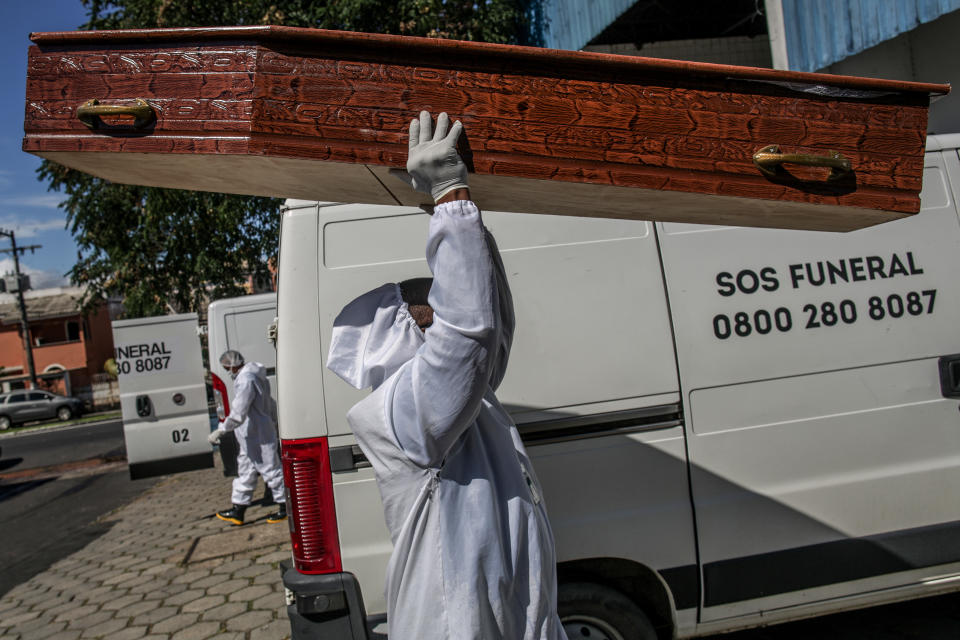
Mexico’s president continues to travel the country
Brazil’s president is not the only leader in Latin America who has played down the severity of the virus, and many countries in the region are not equipped to deal with the pandemic.
Following the first case in Mexico, President Andrés Manuel López Obrador continued to travel the country.
He let his health advisers take the lead on the crisis but kept insisting Mexico’s strong family bonds and work ethic would pull it through.
On Friday, Mexico reported 479 fatalities, the highest one-day death toll to date.
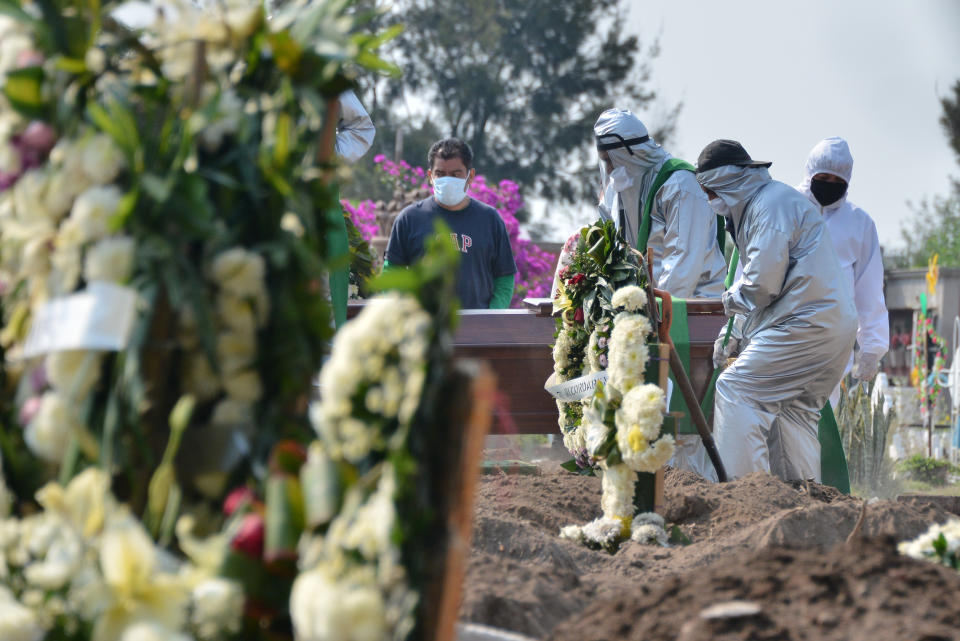
According to Johns Hopkins data, Mexico has more than 60,000 confirmed cases and 6,000 deaths, however, the Health Department has said the real numbers are most likely higher due to Mexico’s low testing rate.
The Mexican government has moved to restart the economy – prior to the pandemic, the country was already struggling with a recession.
While at the San Cristobal Mauseleum in the Mexico City, business has doubled.
Grisly photos emerge from country battling surge in virus deaths
'People die': Grisly scenes as body bag stunt takes over White House
“The crematoriums are saturated,” manager Armando Sepulveda told the Associated Press.
“All of the ovens don’t have that capacity.”
As the coronavirus spreads into the heart of the Amazon jungle, residents are placing signs on their homes to show they are suffering.
Colombian authorities suggest Brazil is to blame for a sudden rise in infections, and the shared border is now militarised on the orders of President Iván Duque.
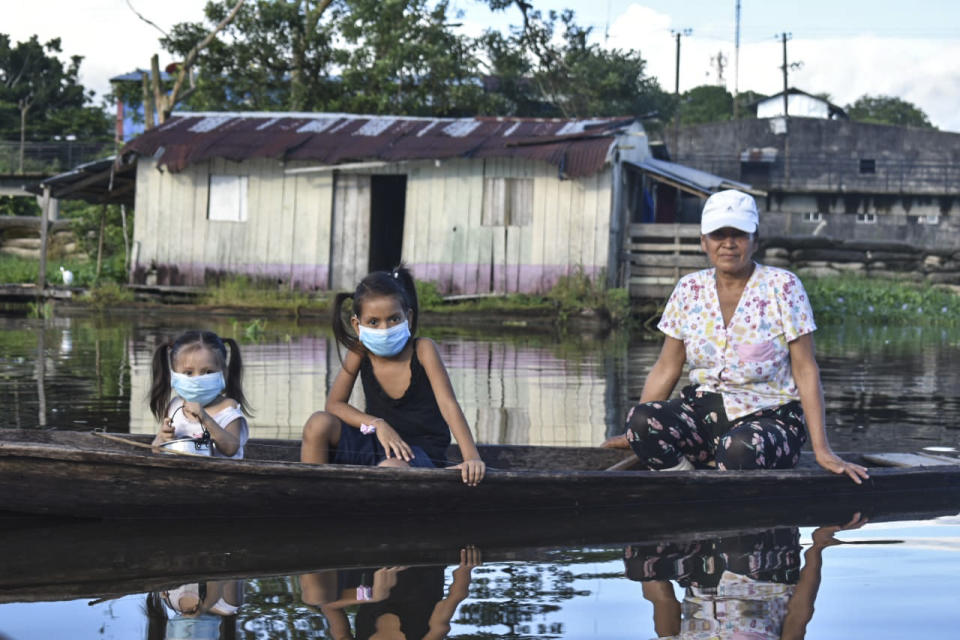
The Colombian town of Leticia, which lies along the Amazon River at the border of Brazil and Peru, has nearly 1,300 cases.
Residents reeling from the illness and a loss of income are placing red cloth flags outside homes with tin roofs to show they are going hungry.
Colombia has been in lockdown for nearly two months and nearly 20,000 people have been confirmed to have COVID-19.
Meanwhile, in Chile’s capital, Santiago, more than 90 per cent of ICU beds were full last week, and in Peru, which has more than 110,000 confirmed cases, there is only 2.5 intensive-care beds per 100,000 people.
“We’re in bad shape,” said Pilar Mazzetti, head of the Peruvian government’s COVID-19 task force.
“This is war.”
– With Associated Press
Do you have a story tip? Email: newsroomau@yahoonews.com.
You can also follow us on Facebook, Instagram and Twitter and download the Yahoo News app from the App Store or Google Play.



